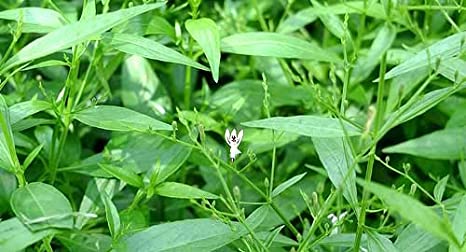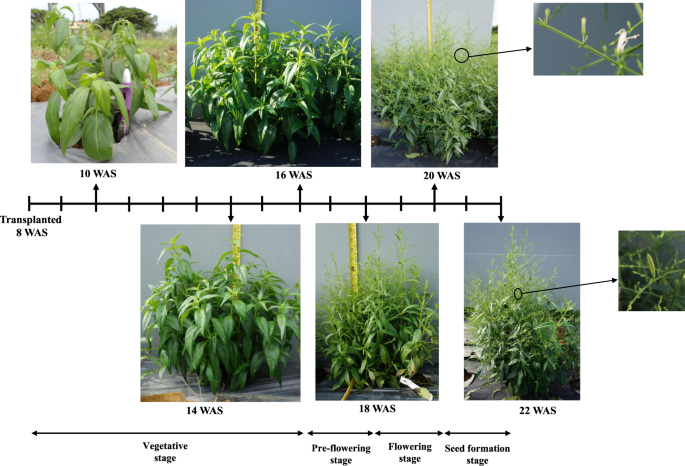Author: Bhavna Singh and Harsh Sehgal
Department of Dravya Guna, Uttaranchal Ayurvedic College, Dehradun, Uttarakhand, India
ABSTRACT
Andrographis paniculata (Acanthaceae) is one of the widely used potential herb with high medicinal value. It is being used by Ayurvedic physicians in various diseases, such as fever, diarrhea, worm infestation, hepatic and skin diseases. Modern studies have also explicitly revealed that Andrographis paniculata has a wide range of pharmacological effects such as antiinflammatory, anti-diabetes, antidiarrhoeal, antiviral, antimalarial, hepatoprotective, anticancer, antihuman immunodeficiency virus (HIV), and immune stimulator. There is a controversy between Kiratikta and Kalmegh due to their common synonym in Ayurvedic texts i.e. Bhunimba. Though in the market, Kalmegh is often known and sold is the name of Bhunimba or Desi Chiraita. In the present work an endeavor has been made to authenticate the market sample of Kalmegh or Bhunimba as Andrographis paniculata. TLC and microscopic identification are two important tools for the authentication of any crude drug. The objective of this work is to study the various morphological and the microscopic characteristics of Kalmegh (Andrographis paniculata), and to carry out a comparative Thin Layer Chromatography (TLC) between the standard sample of Andrographis paniculata (whole plant), and the market sample of
Kalmegh.
INTRODUCTION
Ayurveda is a medical science that gives us a profuse knowledge of Dravyas or drugs which we get from plants, animals and minerals. The medicinal plants are the potentia source of Ayurvedic medicines and are a core component at the primary health care level due to their availability, compatibility and affordability. India is perhaps the richest nation with regard to herbal medicinal wealth (about 15000-20000 plants have been found to have good medicinal value). And it also has the oldest medicinal system in the form of Ayurveda. Ayurvedic classics have mentioned many efficacious herbs to treat a variety of ailments. One such herb is being Kalmegh i.e. Andrographis paniculata (Burm.f.) Wall. ex Nees, is a potent hepatoprotective and antifebrile herb. Modern studies have explicitly revealed that Andrographis paniculata has a wide range of pharmacological actions such as anti-inflammatory, anti-diabetes, anti-diarrheal, anti-viral, anti-malarial, hepatoprotective, anti-cancer, anti-human immunodeficiency virus (HIV), immune stimulator, and anti-snakebite.
Kalmegh, meaning is “dark cloud” because of its appearance from a distance like a black cloud in the blue sky. It is also known as Bhui-neem, meaning “neem of the ground”, since the plant, though being a small annual herb, has a similar strong bitter taste as that of the large Neem tree (Azadirachta indica). In different geographical regions Kalmegh i.e. Andrographis paniculata is termed as Bhunimba, Bhunimo, Desi chirality, etc. Glossary of Vegetable Drugs in Brihattrayi mentioned that in Madhya Pradesh it is popular in the name of Bhunimba, but in Nagpur area and forests of Bihar it is termed as Chiraita. In Orissa, it is called Bhunimba or Bhunimo. Renowned scholars of Ayurveda, Acharya PriyaVrat Sharma and Bapalal G. Vaidya also mentioned the Bhunimba as a synonym of Kalmegh.
In Adarsh Nighantu, Bapalal G. Vaidya has mentioned Kalmegh in Vasadi Varga with synonyms Kalpanath, Yavatikta, and Shankhini. According to him Rasa of Kalmegh is Tikta and has Deepaniya, Katu-paushtik, Jwaraghna and Yakrit-rog Nashak Karma. Prof. PriyaVrat Sharma has mentioned Kalmegh in Shatpushpadi Varga with synonyms Bhunimba. Its fruits are Yava shaped and so it is mentioned as Yavatikta in some Nighantus. Its Rasa is Tikta, Guna is Laghu-Ruksha, Veerya is Ushna and Karma is Kapha-Pitta vanishing. According to him, it is used as Deepan, Sweden, Jwaraghna, Kriminashak and is helpful in Yakrit roga and Kushtha.
Pharmacological properties and therapeutic actions of Kalmegh:
In Ayurveda, the therapeutic actions of any drug are based on its properties such as Rasa, Guna, Virya, and Vipaka. According to the Ayurvedic Pharmacopeia of India the properties and actions of Kalmegh are listed below.
Rasa (Taste)-Tikta (Bitter)
Guna (Qualities)-Laghu (Light for digestion), Ruksha (Dry in nature)
Veerya (Potency)-Sheet (Cold) Vipaka (Metabolic Property)-Katu (Transforms into Pungent/Spicy taste after digestion)
Karma (Actions)-Kaphapitta shamaka (reduces vitiated Kapha and pitta dosha), Dipana (appetizer), Pachana (digestive), Yakrut uttejaka (stimulates liver), Jwaraghna (antipyretic), Krimighna (wormicidal), Raktashodhak (purifies blood), Shothahar (reduces oedema), Svedajanana (stimulates sweating).
Chemical Constituents:
Andrographolide, neoandrographolide, andrograpanin, 12-didehydroandrographolide, are the principal chemical constituents found in the plant.
Habitat and Distribution:
Andrographis paniculata (Burm. f.) Wall. ex Nees grows mostly in tropical and moist regions and is distributed in the plains of India, Pakistan, Sri Lanka and West Indies.
Collection method and time:
Ayurvedic science gives great importance on the collection methods of the drugs. Time has its own importance in the procedure involved. The whole plant material (Panchang) of Kalmegh is used for its medicinal properties. It is collected when the entire plant is well grown and has full potency in the end of the rainy season (Varsha Ritu) or in the beginning of the winters (Sharad Ritu).
Formulations and Dosages:
In Ayurveda, Kalmegha is used in the form of many formulations such as Churna Kalpana (Powder form) 1-3 gms; Swaras (Juice): 5-10 ml; Kwath (Decoction): 20-40 ml; Taral Satva (Liquid extract): 1/2-1 ml
MATERIALS AND METHODS
Collection and authentication of plant material: Kalmegh (Andrographis paniculata (Burm.f.) Wall. Ex Nees.) panchang (whole plant), used in the study was procured from a reliable source of Dehradun market in the name of Bhunimb consisting of the chopped pieces of the whole plant with stem, leaves,roots, flowers and fruits with some seeds. Its authentication was done in the PG Department of Dravya Guna, Uttaranchal Ayurvedic College (UAC), Dehradun. The plant material was further identified at Systematic Botany Branch, Botany Division, Forest Research Institute (FRI), Dehradun. At the same time, the whole plant of Andrographis paniculata was collected from the Non Wood Forest Products (NWFP) Division, Forest Research Institute (FRI), Dehradun on September 25th, 2017 and a herbarium specimen was made and deposited at the Systematic Botany Branch (SBB), FRI,Dehradun for authentication. The plant was authenticated and an Herb Registration Number-172435, dated November 17th, 2017 was assigned to it. Preparation of Free Hand Sections for microscopic studies: This study was held in the Botany Division of Forest Research Institute (FRI) on December 18th, 2017. Free hand cross sections (CS) of the stem of Andrographis paniculata were made using razor blades. Suitable sections were selected and treated with iron alum and then washed 5-6 times with distilled water. Two drops of haematoxylin compound were put on the sections for 30 min, till the sections turn light blue. There after the sections were put in distilled water for 30 min. Four drops of safranin with 30% alcohol (C2H5OH – Ethanol) were put on the sections and left overnight. The CS’s were dehydrated with 30%, 50%, 70%, 90% alcohol respectively and then with absolute alcohol, each for 5 min. After dehydration, the sections were treated with xylene + clove oil (50:50) solution and the mounting was done with Canada balsum-the adhesive medium and the slide was made and was studied under microscope with 100 X and 400 X magnification.
Thin Layer Chromatography (TLC):
Thin layer chromatography is a technique used to analyze components of a mixture for the purpose to monitor the progress of a reaction, to identify the compounds present (qualitative analysis) in a given mixture and to determine the purity of the substance. In the present investigation, TLC technique was used to ascertain the identity and quality of the commercially available plant material through comparison of its TLC profile with that of the authenticated plant material used as standard. Preparations for TLC profile This study was carried at the Chemistry Division, FRI, Dehradun. Both the market sample and the authenticated plant material (standard) were separately cleaned, washed and shade dried for a period of 96 hours. After drying, both the samples were separately milled and a fine powder of 35 mesh size from a normal sieve was prepared. The entire process of TLC examination consisted of three steps-1.1) Extraction of plant material, 1.2) Isolation of the extract, 1.3) TLC development.
1. Extraction of the plant material: The powdered plant material (10 gm) was extracted with ethanol (100 ml) for a period of 24 hrs at room temperature. The extract was filtered using Whatman filter paper no 01
2. Isolation of the extract: The extract was concentrated to dryness by using Rotary Film Evaporator and yield was determined to be 1.86% and 1.89% for the market sample and standard, respectively.
3. TLC development: For TLC, solution of each dry extract isolated from the market sample and the standard was prepared by dissolving accurately weighed 50 mg extract
in 5 ml of ethanol. TLC was performed on pre-coated Silica gel 60 F254 aluminium plates (20 x 20 cm, E. Merck) used as a stationary phase. A plate of size 10 cm length x 3.5 cm breadth was made and both the samples were applied on it at a distance of 17 mm. The plate was developed in a TLC chamber pre saturated for 20 minutes with 7% methanol (HPLC Grade, E. Merck) in chloroform (HPLC Grade, E. Merck). The plate was dried in air and the spots were seen under UV light at 254 nm and 366 nm and after that derivatization has been done with 5% H2SO4 followed by heating in an hot air oven for 5 minutes at 110 °C. Now again TLC profiles of the both samples market and standard were observed.
RESULTS AND DISCUSSION
Morphological (Macroscopic studies) Kalmegh is a small terrestrial, annual, erect herb, attaining 1-3 feet of height. The Stem is dark green, much branched, sharply quadrangular, smooth from the lower part with longitudinal furrows, and wooly haired at upper young parts. Leaves are smooth, opposite, linear to lanceolate, short petioled, with narrowed ends, 1.5-2.5 inches in length and 0.5-0.75 inches wide. Flowers are small, petiolate, white, light purplish or with purple patches; inflorescence is spreading (terminal and axillary) panicled recemes of 2-4 inches long. Calyx is 5, linear, lanceolate and wooly haired. Corolla tube is narrow and about 6 mm long; limb longer than the tube and is bi-labiate. Two stamens, inserted in the throat and far exerted; anther basically bearded. Fruits are the erect capsules of linear-oblong shape, 1 – 2 cms long and 2-5 mm wide and acute at both ends. The unripe fruit is wooly haired whereas the ripe one is smooth. Seeds are small, numerous, sub-quadrate and yellowish brown in color. The plants bear flowers and fruits during the months of April-May (Grishma Ritu) and September-October (Sharad Ritu).
CONCLUSION
The morphological characters such as colour, shape of the stem and fruits and bitter taste etc. are the important features to identify the drug Kalmegh. The synonyms, local name in different states and references available in Ayurvedic literature of modern era suggest Andrographis paniculata as the source for kalamegh as well as Bhunimb. Results of the comparative TLC profiling of both the market sample and the authenticated plant material used as standard, revealed that both the samples were qualitatively alike. So, we can conclude that the market sample of kalmegh sold as Bhunimba or Desi Chiraita is Andrographis paniculata.


